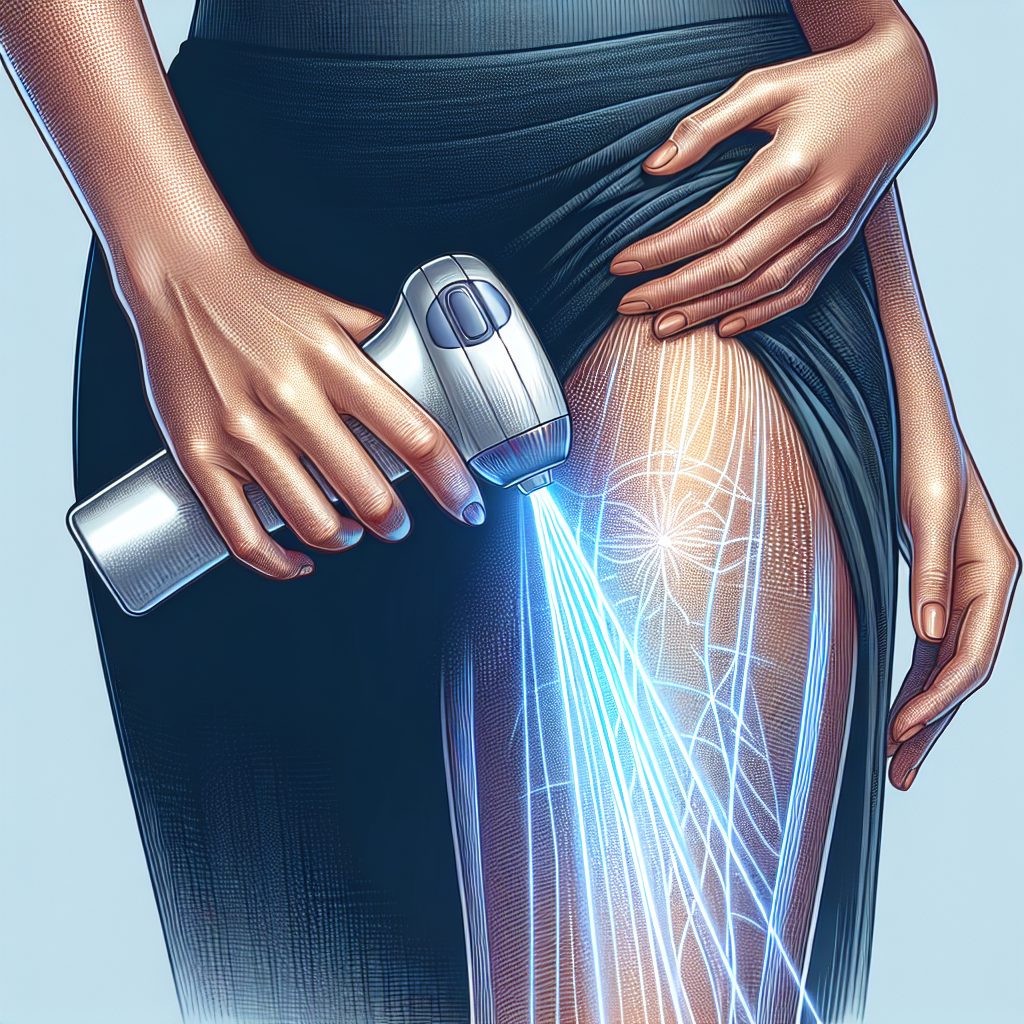So you’ve decided that you’ve had enough of living with cellulite and you’re ready to explore treatment options. But where do you start? This article aims to provide you with the answers you need by answering some of the most frequently asked questions about cellulite. We’ll cover everything from what cellulite is and what causes it, to whether it’s harmful and if diet and exercise can help reduce it. We’ll also touch on the gender differences in cellulite prevalence and delve into the various treatment options available, including home remedies, medical procedures, and the effectiveness of creams and lotions. By the end of this article, you’ll have all the knowledge you need to make an informed decision and book a consultation for cellulite laser treatment.

Understanding Cellulite
What is cellulite?
Cellulite is a condition characterized by the dimpled appearance of the skin, most commonly seen on the thighs and buttocks. It occurs when subcutaneous fat pushes against the connective tissue, creating a lumpy and uneven texture on the skin surface.
What causes cellulite?
The exact cause of cellulite is not fully understood, but there are several factors that contribute to its development. Hormonal changes, genetics, poor circulation, and a sedentary lifestyle are believed to play a role in the formation of cellulite. Additionally, excess body fat and a high body mass index (BMI) can increase the likelihood of cellulite occurrence.
Is cellulite harmful?
Cellulite is generally considered a cosmetic concern and does not pose any significant health risks. However, its appearance can cause self-consciousness and affect a person’s body image and self-esteem. While cellulite itself is not harmful, addressing the underlying causes and managing it effectively can contribute to overall health and well-being.
Are women more prone to cellulite than men?
Cellulite is more commonly seen in women than men. This is primarily due to differences in the structure and distribution of fat cells, connective tissue, and hormones. Female hormones, such as estrogen, are believed to play a role in the development and severity of cellulite. However, it is important to note that men can also develop cellulite, although it is less common.
Is cellulite more common as you age?
Cellulite tends to become more prevalent with age. As we age, the skin loses elasticity, fat cells increase in size, and the connective tissue may weaken. These factors contribute to a higher likelihood of cellulite formation. However, it is important to remember that cellulite can occur at any age and is not exclusively limited to older individuals.
Managing Cellulite with Diet and Exercise
Can diet and exercise reduce cellulite?
While diet and exercise cannot completely eliminate cellulite, they can help manage its appearance and prevent further development. A healthy and balanced diet, rich in fruits, vegetables, lean proteins, and whole grains, can contribute to weight management and overall skin health. Regular exercise, including cardiovascular activities and strength training, can improve blood circulation, tone muscles, and promote the overall health of the skin.
It is important to note that diet and exercise may not have the same results for everyone. Factors such as genetics and the severity of cellulite may influence the effectiveness of lifestyle changes. However, adopting a healthy lifestyle can have numerous benefits beyond cellulite reduction, including improved overall well-being.
Treatment Options for Cellulite
How can cellulite be treated?
There are various treatment options available for cellulite, ranging from home remedies to medical procedures. Some common treatments include:
-
Topical treatments: Creams, lotions, and gels containing ingredients like caffeine, retinol, and collagen claim to improve the appearance of cellulite temporarily.
-
Massage and dry brushing: These techniques can help stimulate blood flow and lymphatic drainage, reducing the visibility of cellulite.
-
Non-invasive procedures: Techniques such as radiofrequency, ultrasound, and laser therapies are designed to target and break down fat cells, increase collagen production, and improve skin elasticity.
-
Minimally invasive procedures: Procedures like subcision, which involves cutting the connective tissue bands under the skin, and injectable treatments like dermal fillers can provide longer-lasting results.
-
Surgical procedures: In severe cases, surgical interventions such as liposuction or laser-assisted liposuction may be considered for cellulite reduction.
The choice of treatment depends on individual preferences, severity of cellulite, and the recommendations of healthcare professionals.
Does losing weight eliminate cellulite?
Losing weight may help reduce the appearance of cellulite to some extent, but it does not guarantee its complete elimination. As cellulite is not solely caused by excess body weight, weight loss alone may not resolve the underlying structural factors that contribute to its development. However, maintaining a healthy weight through proper diet and exercise can improve overall skin health and potentially minimize the visibility of cellulite.
Are there any effective home remedies for cellulite?
While there are no definitive scientific studies proving the effectiveness of home remedies in treating cellulite, some individuals claim to have experienced positive results with certain approaches. These include:
-
Coffee scrubs: Applying a mixture of coffee grounds and oil to the affected areas and massaging it in a circular motion may help temporarily improve the appearance of cellulite due to the caffeine content.
-
Dry brushing: Gently brushing the skin with a dry brush can stimulate blood circulation and lymphatic drainage, potentially reducing the visibility of cellulite.
-
Hydration: Drinking an adequate amount of water and maintaining overall hydration can help improve skin health and elasticity.
-
Healthy diet: A nutrient-rich diet, including foods high in antioxidants, can support overall skin health.
It is important to note that individual results may vary, and it is always advisable to consult with a healthcare professional before trying any home remedies.
Can creams and lotions really reduce cellulite?
Creams and lotions that claim to reduce cellulite often contain ingredients like caffeine, retinol, and collagen. While these products may improve the appearance of cellulite temporarily by tightening the skin or increasing blood flow to the area, the effects are usually short-lived.
The effectiveness of these creams and lotions varies from person to person, and results may not be long-lasting. It is important to approach these products with realistic expectations and consider them as part of an overall cellulite management plan that includes a healthy lifestyle and possibly other treatments.
Understanding Cellulite Laser Treatment
What is cellulite laser treatment?
Cellulite laser treatment, also known as laser-assisted liposuction, is a minimally invasive procedure designed to reduce the appearance of cellulite. It involves the use of laser energy to target and break down fat cells and stimulate collagen production, leading to smoother and firmer skin.
How does cellulite laser treatment work?
During the procedure, a small laser fiber is inserted through tiny incisions in the skin. The laser energy is then delivered to the underlying fat cells, causing them to rupture. The liquefied fat is then suctioned out or allowed to be naturally eliminated by the body. The laser energy also stimulates collagen production, which helps improve the elasticity and texture of the skin.
Is cellulite laser treatment safe?
Cellulite laser treatment is considered safe when performed by a qualified and experienced healthcare professional. However, as with any medical procedure, there are potential risks and complications that may arise. It is important to discuss these with your healthcare provider and weigh the potential benefits against the potential risks before undergoing the treatment.
What are the potential side effects of cellulite laser treatment?
Some potential side effects of cellulite laser treatment may include temporary bruising, swelling, redness, and discomfort in the treated area. In rare cases, infection, scarring, or changes in skin pigmentation may occur. It is important to follow post-treatment care instructions provided by your healthcare provider to minimize the risk of complications.
How long does cellulite laser treatment take?
The duration of cellulite laser treatment can vary depending on the size and number of treatment areas. Generally, the procedure takes between one to three hours, including preparation and recovery time. Your healthcare provider will provide you with a more accurate estimate based on your individual treatment plan.

Finding a Clinic for Cellulite Laser Treatment
Researching reputable clinics
When searching for a clinic for cellulite laser treatment, it is important to do thorough research to ensure you choose a reputable and trustworthy provider. Look for clinics that specialize in cosmetic procedures and have experienced healthcare professionals who are trained in cellulite laser treatment.
Reading reviews and testimonials
Reading reviews and testimonials from previous patients can provide insights into the quality of care and results offered by a clinic. Look for reviews on independent platforms and websites that are not affiliated with the clinic to ensure unbiased opinions.
Consulting with healthcare professionals
Consulting with healthcare professionals, such as dermatologists or plastic surgeons, can also help you find a reputable clinic for cellulite laser treatment. They can provide recommendations based on their experience and knowledge in the field.
Considering location and convenience
When choosing a clinic, consider the location and convenience factors. Opting for a clinic that is easily accessible and within a reasonable distance can make the overall treatment process more convenient and stress-free.
Understanding the cost of cellulite laser treatment
It is important to consider the cost of cellulite laser treatment when choosing a clinic. The price can vary depending on factors such as the extent of cellulite, the number of treatment areas, and the location of the clinic. It is advisable to obtain a detailed cost estimate during your consultation and discuss any financing or insurance options available to you.
Preparing for a Consultation
Gathering relevant information
Before your consultation, gather any relevant information about your medical history, previous treatments, and current medications. This can help your healthcare provider assess your suitability for cellulite laser treatment and provide personalized recommendations.
Writing down questions and concerns
It is helpful to write down any questions or concerns you may have before your consultation. This ensures that you address all your queries and have a clear understanding of the treatment process, potential risks, and expected outcomes.
Checking insurance coverage
If you have health insurance coverage, check with your insurance provider to determine if cellulite laser treatment is covered. Some insurance plans may cover the procedure if it is deemed medically necessary.
Scheduling an appointment
Contact the chosen clinic to schedule a consultation for cellulite laser treatment. Be prepared to provide necessary personal and medical information during the appointment booking process. Choose a date and time that works best for you and fits within your schedule.

What to Expect During a Consultation
Meeting the healthcare provider
During your consultation, you will meet with a healthcare provider who will assess your condition, discuss treatment options, and address any concerns you may have.
Discussing medical history and current concerns
Your healthcare provider will review your medical history and ask specific questions related to your cellulite condition. They may inquire about your lifestyle, previous treatments, and any allergies or sensitivities you may have.
Exploring treatment options
Based on your individual assessment, your healthcare provider will discuss the various treatment options available for cellulite laser treatment. They will explain the potential benefits, risks, and expected outcomes of each option.
Addressing expectations and realistic outcomes
It is important to have a candid discussion about your expectations and the realistic outcomes that can be achieved with cellulite laser treatment. Your healthcare provider will provide you with a realistic assessment of the potential results based on your individual condition.
Assessing candidacy for cellulite laser treatment
Your healthcare provider will evaluate whether you are a suitable candidate for cellulite laser treatment. Factors such as your overall health, skin condition, and treatment goals will be taken into consideration. They will also discuss any contraindications or precautions that may apply to you.
Questions to Ask During a Consultation
What are the potential risks and complications?
Ask your healthcare provider about the potential risks and complications associated with cellulite laser treatment. Understanding these risks can help you make an informed decision about the procedure.
How many sessions are typically required?
Inquire about the number of treatment sessions typically required to achieve the desired results. Your healthcare provider will be able to provide an estimate based on your individual condition.
What is the expected recovery period?
Ask about the expected recovery period after cellulite laser treatment. Your healthcare provider will provide instructions for post-treatment care and advise on any limitations or restrictions during the recovery phase.
What results can be realistically achieved?
Discuss the potential results that can be realistically achieved with cellulite laser treatment. It is important to have realistic expectations and understand that individual results may vary.
What are the alternatives to cellulite laser treatment?
If cellulite laser treatment is not suitable for you or if you prefer alternative options, ask your healthcare provider about other treatments that may be available. They can discuss alternative approaches and help you determine the most appropriate course of action.
Booking a Consultation for Cellulite Laser Treatment
Contacting the chosen clinic
Contact the chosen clinic through their preferred communication channels, such as phone or email. Inquire about the availability of consultation appointments and any specific requirements or forms that need to be completed before the appointment.
Inquiring about availability and scheduling
When contacting the clinic, ask about the availability of consultation slots and find a time that works best for you. Consider any scheduling conflicts or commitments when selecting a date and time.
Providing necessary personal and medical information
During the appointment booking process, be prepared to provide personal and medical information as requested by the clinic. This information will help ensure a smooth consultation and enable the healthcare provider to better understand your individual needs.
Confirming the date and time of the consultation
After sharing your personal and medical information, confirm the date and time of your consultation with the clinic. Double-check the accuracy of the details to avoid any confusion or scheduling errors.
Preparing for the Consultation Appointment
Arriving on time
Arrive at the clinic on time for your consultation appointment. This allows for a smooth and efficient consultation process and ensures that you have sufficient time to address your concerns and queries.
Bringing relevant documents and medical records
Bring any relevant documents and medical records that you have gathered, including previous treatment records or relevant test results. These can provide valuable insights to your healthcare provider and aid in the assessment process.
Wearing comfortable clothing for examination
Wear comfortable clothing that allows easy access to the areas being examined. This may involve wearing loose-fitting clothing or removing outer layers during the examination, depending on the instructions provided by your healthcare provider.
Being prepared to discuss personal goals and expectations
Be prepared to openly discuss your personal goals, expectations, and concerns during the consultation. This will help your healthcare provider better understand your needs and develop a tailored treatment plan that aligns with your desired outcomes.
By following these steps and guidelines, you can successfully book a consultation for cellulite laser treatment and begin your journey towards managing cellulite effectively. Remember to consult with healthcare professionals and make informed decisions based on your individual condition and goals.

